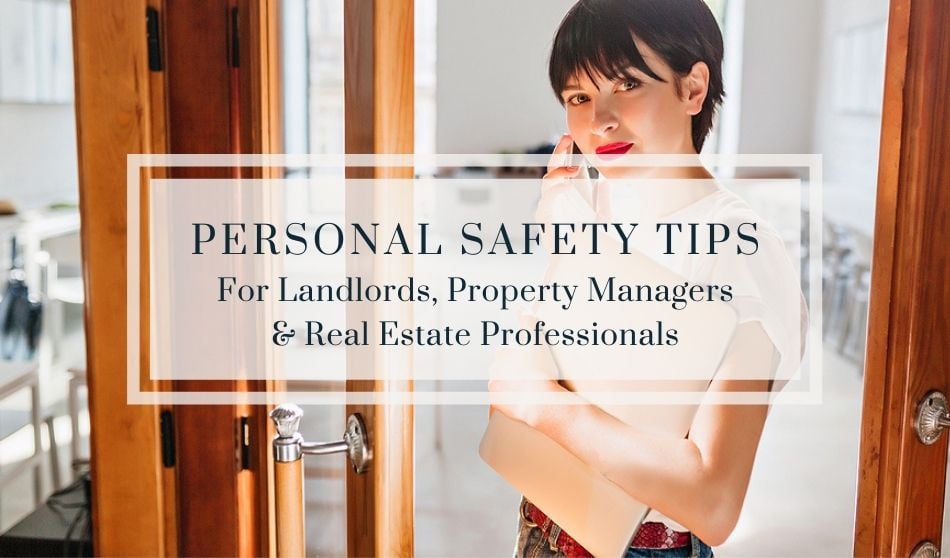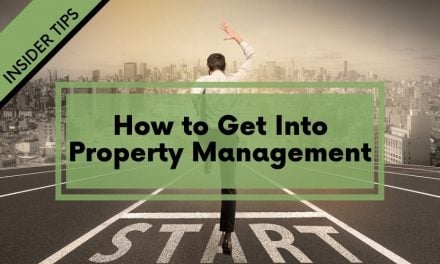
We tend to focus on protecting the safety of those around us — which is admirable — but our personal safety should also be a priority. And for those with occupations in the real estate industry, from sales to property management, there are inherent risks to health and safety. The good news is that these risks can be mitigated with a good safety strategy.
Conduct a Safety Assessment
The first goal is to have an honest assessment of safety concerns in the workplace. We might know instinctively how to protect ourselves or watch for dangers, but we all have blind spots when it comes to our surroundings and routines. Conducting a safety assessment not only opens our eyes to any possible risks, but can also help us determine what steps are necessary if the need arises.
Part of making an assessment involves contemplating all the aspects of your occupation where you may encounter a situation or a person that could cause harm.
Times of Vulnerability
For a detailed safety assessment, it’s important to figure out what those times of vulnerability are in your occupation.
Common areas that you’ve likely already addressed would be OSHA (Occupational Safety and Health Administration (OSHA) has mandated for things such as COVID-19 and injury protocols.
OSHA standards are required to maintain good working conditions that we’ll address in the Safety Planning section below. But working in the real estate and rental industry brings up additional safety concerns that can leave you vulnerable to harm such as:
- Showing a vacant rental
- Hosting an open house
- Lease signing appointments
- Property inspections
- Rental inspections
- Gang and criminal activity
- Angry tenants
- Violence between tenants and guests
- Dogs and dangerous pets
- Winter darkness
- Evictions
- Rent collections
- Rentals with tenants that hoard
- Rentals used for drug deals and meth houses
Plan a Safety Strategy
After you’ve written down the potential for harm in your assessment, it’s time to put that information and your OSHA standards together into a comprehensive safety strategy for your organization.
Based on your assessment, create a safety manual binder (be sure to keep a digital copy online) with sections of each type of vulnerability, the protocols to follow to stay safe, and other information such as checklists and safety meeting handouts and attendance records.
Before we dive into the rental industry specifics, be sure to implement the general OSHA recommended practices. From their safety management page, OSHA states,
The idea is to begin with a basic program and simple goals and grow from there. If you focus on achieving goals, monitoring performance, and evaluating outcomes, your workplace can progress along the path to higher levels of safety and health achievement.
Employers will find that implementing these recommended practices also brings other benefits. Safety and health programs help businesses:
Prevent workplace injuries and illnesses
Improve compliance with laws and regulations
Reduce costs, including significant reductions in workers’ compensation premiums
Engage workers
Enhance their social responsibility goals
Increase productivity and enhance overall business operations
You can find core elements, tools, case studies, additional resources and download the recommended practices here:
OSHA Recommended Practices for Safety and Health Programs
With that in mind, your safety strategy should include holding routine safety meetings — even if you are a private landlord with no employees, take time at least monthly to review safety topics and make sure areas of concern have been addressed (such as replacing burnt out exterior lights).
In your safety strategy, consider if you need to invest in tools and equipment to help with safety measures such as a panic button and visible cameras and be sure to outline escape routes.
Personal Safety Tips for Landlords, Property Managers, and Real Estate Professionals
The three most common threats are theft, verbal altercations, and physical assault.
Know that altercations with angry tenants are not premeditated and can likely be diffused with good communication and conflict resolution skills.
Thefts are crimes of opportunity and therefore think about ways to secure your office and valuables.
Although some theft is premeditated, predators intent on physical assault will do research and stake out the situation before choosing where and whom to victimize. Knowing this is powerful because you then have the opportunity to set the tone and take precautions to deter them away.
Set the Tone
Whether you are getting to know your tenants or working with a prospect, set the tone of confidence and control so always keep your cool and maintain a (friendly yet) professional persona.
Property managers, in particular, should be cautious when sharing personal information, but everyone working with the public should remember this as well.
Control your schedule — If someone asks for a 10a appointment, don’t be afraid to say 10:15a works best for you. It’s a subtle power dynamic trick that sets the tone of authority. You should also give them a clear indication of how long the appointment or showing will take.
In every interaction, avoid appearing passive but rather confident, and when necessary, even assertive. Use clear body language, tone of voice, eye contact, and posture to make sure those you are speaking with know that you would not make an easy target.
You can also set the tone in your marketing and on calls by informing that the area is popular and the home has large windows that allows in plenty of sunlight.
Greeting someone in person you should stand up from your chair or stand up on the porch or step. Then, either give them a strong handshake or a solid head nod to demonstrate strength and confidence.
Office Safety
Your office should be a place of safety so create an environment that takes into account the different types of risks that might present themselves.
- Put desk where you can view the door/entry, walkway
- Never indicate you are alone in the office
- Don’t leave keys on the desk or hung near the door
- Keep cabinet doors locked and key hidden
- Ask for ID for all unknown delivery personnel
- Don’t accept cash and have a ‘no cash on premises’ sign. An electronic alternative to cash payments such as PayNearMe.
- Don’t advertise rent drop-off locations and consider switching to an online rent payment system.
- Contact the police if you receive threatening texts, calls, or social media messages. Submit separate reports for each incident so that if it escalates, the courts can treat it as a felony vs a misdemeanor.
Tips when Showing a Vacant Rental
Showing a vacant rental or home for sale is where most real estate professionals are the most vulnerable. A good practice is to require that you or your prospects fill out a guest register with their full name, address, phone number, email, and vehicle information. Then, copy, scan, or take a picture of the prospect’s driver’s license or ID card before entering the home.
Use active listening skills and ask open-ended questions. Don’t be shy in digging in for more detailed answers. This shows that you are leading the interaction, but more importantly, allows you to suss out any contradictions. Look for stumbling on questions that should be easy to answer such as: ‘What about the house caught your eye?’ or ‘How did you end up choosing this property?’
If at all possible, never go alone or host an open house alone, but in the event you must, here are some personal safety tips that can help keep you safe:
- If you can’t have a buddy system and must go alone, inform someone you are going to the showing with a timeline of when you’ll check back up with them after.
- Don’t park in the driveway but rather park your car in front of the property to avoid having your car blocked in.
- Keep your car keys and cell phone with you at all times
- Have your cell phone fully charged before every meeting
- Lock your handbag, purse, laptop case, or any important valuables in the trunk of your car.
- If you can’t take someone with you to the showing, tell prospective tenants that it’s possible a friendly neighbor might drop by — or that you are meeting another prospect after that appointment.
- Insist on and always have the prospect enter the home before you.
- Keep the front door open and engage (extend) the deadbolt so that it can’t be closed.
- Have all the curtains and blinds fully open in the home.
- Walk behind them at all times, never giving them the opportunity to overtake you from behind.
- Avoid going with the prospects into basements, attics, outbuildings, etc.
- Check all rooms and areas before locking up and leaving.
Rental and Property Inspections
For rental and property inspections, many of the same principles apply when showing a vacant property. It’s all about your safety.
For your personal safety, fix burnt-out or broken interior, exterior, and street lights immediately when noticed. Walk with confidence with your head up – not looking down at a cell phone. Wear flat shoes and not high heels and wear a name badge and/or a reflective vest.
Safety First!
Most importantly, trust your gut instinct. If your intuition is sending you warning signals, you can always give a reason why you need to cancel, can’t meet with someone, or need to cut a meeting or showing short. Safety first!
Hopefully, you won’t experience a verbal altercation, theft of property, or assault — but being prepared can increase your chances of staying safe.





